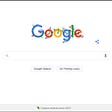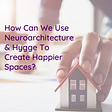The nonprofit website RFP: how to avoid shooting yourself in the foot
Is your RFP process helping you find the best solution or service—or are you just shooting yourself in the foot? Many nonprofits consider RFPs to be the surest path to an accurate comparison between solutions or services. Meanwhile, many consultants, agencies and providers have come to associate RFPs with rigid guidelines, fill-in-the-blank solutions, and limited opportunities for dialog, all of which tend to yield bad results for both client and provider.
These providers do have a point. A too-rigid, prescriptive RFP process (as many are) stifles a consultant’s ability to propose the right solution for your needs based on their experience — when knowledge and experience are exactly what you should be paying your consultant or agency for.
There is a middle way, however: a good balance of specificity and flexibility in your RFP process can help you achieve an approximate service comparison while allowing for a range of alternative solutions — thereby making the process work for you, not against you.
RFP basics
You can find plenty of web design RFP checklists and templates online. They usually include:
- Organizational overview (mission, activities, etc.)
- Project goals
- Intended audiences and audience-related goals
- Technical and functional specifications
- Budget
- Timeframe
When it comes to your organizational overview and site audiences, how much detail you’d like to include is up to you. Most agencies will carry out an in-depth discovery and research phase at the start of the project, and you’ll have the chance to explore these points in more depth, so feel free to keep it basic at the RFP stage.
The meat of the matter: your project goals
Understanding your own goals in depth, and clearly articulating them, helps put the project in context, and will lead to more accurate estimates. Organizations’ redesign goals cover the gamut from strategic to aesthetic; needless to say, each has very different implications in terms of scope and costs.
Occasionally, a client approaches us with what sounds like purely aesthetic redesign needs: “We just want it to look more modern.” This makes us raise our eyebrows a bit. Purely aesthetic/cosmetic requests are some of the simplest to implement, but it’s often the case that a discovery process will uncover deeper needs. A bit more soul-searching is needed to identify those needs prior to the discovery process.
To uncover potential goals, ask yourself the following questions:
- Are you receiving complaints, internal (from staff) or external (from visitors) about the functionality and usability of your site?
- Has your organization grown or changed in terms of mission, activities or audiences, so that your current site no longer serves or reflects them?
- Does your site support your content needs in terms of type (news, stories, press releases, events, downloads) or media (video, audio, images)?
- Does your site support your marketing, fundraising or communication efforts? Is it conversion-oriented (however you define conversion)?
- Do you have specialized needs that you hope your new site will support (ex. event ticket sales, advocacy platform, robust content library, member-only content, multi-lingual)?
- Is your site mobile-optimized?
- Have you rebranded recently, and need your site to reflect the new brand guidelines?
Be descriptive, not prescriptive
When it comes to technical and functional specifications, it’s best to err on the side of being descriptive rather than prescriptive. By stating the problem instead of the desired solution, you allow us to understand where you’re coming from and to suggest solutions that may be better than what you had thought of or envisioned.
Instead of “must have events feed on homepage” you might say “increase visibility of our events.” Instead of requesting a forum, you might ask for a way to allow members to ask each other questions and seek advice. This applies to CMS as well. Some RFPs include specific CMS requests that seem mismatched to the project’s requirements. Allow the consultant or agency to suggest a CMS based on your needs, and not the other way around.
Exceptions to this: if the specification in question is simple or basic (ex. “include Google Analytics code”), or if you have extensive research or knowledge that points to one specific solution.
Define “interactive” & “integration”
In web design, few words are as vague as “interactive” and “integration” (although “modernize” is a strong contender). If you’re tempted to include them in your RFP, ask yourself what you really mean to say, and aim to be more specific. An interactive map can mean an image that reveals more information when mousing over “hotspots”, or it can mean a searchable location directory using address, categories or keywords along with Google Maps.
The word “integration” is similarly open-ended. A single on-page field that feeds emails into your CRM is an example of integration. So is a robust on-page advocacy platform. For more accurate estimates, be specific.
State your content needs
Do you have a variety of kinds of content you know you’d like to include — news, stories, press releases, events, downloads, etc.? Mention those in your RFP. Many firms will estimate at least in part based on content types, since each type calls for a unique template and presentation.
If you’re not sure which content types you’ll need, your selected agency can help you figure out your needs during the discovery phase. Note that the provider may need to adjust the estimate as a result.
Include your budget
Most organizations begin the RFP process with a spending ceiling or budget range. Yet many leave it out of their RFPs, perhaps fearing consultants will pad their estimates to fit the budget.
But consultants and agencies are fully aware that they’re taking part in a bidding process, and will generally aim to stay competitive. Your budget is a crucial piece of information that helps us tailor the proposal to your needs. If the budget is low in relation to the desired scope, we may suggest a reduced scope or simplified alternatives to your requirements. If the budget is higher, we may suggest more robust or added solutions. Either way, an itemized break-down from the vendor can help you understand where the fees are coming from.
Many firms (including us, with a few exceptions) will not submit a proposal without knowledge of your budget. Preparing a proposal is a time-consuming process requiring a lot of up-front research, and some prospects approach us with unrealistic budget expectations. We want to make sure you’re not one of those.
Be realistic about schedule
Your site is a big investment in terms of both money and resources, and a well-planned site takes time. A complete redesign process entails discovery and research, planning, site architecture and wireframes, content strategy, visual design, development and third-party integration — and enough time for dialogue and revisions on all phases.
Take a long-term view of your investment. Don’t risk derailing the process by imposing an unrealistic and arbitrary timeframe. It may seem essential to have the site launch coincide with your new brand launch in two months, but most custom-made sites take longer than that. Beware of yes-men who promise to turn around a project that fast (if it sounds too good to be true…). As an alternative, consider instead breaking the project in two phases, with a bare-bones launch followed by a complete launch down the line.
On a related note: if your team will be responsible for content gathering and entry, don’t underestimate the amount of time, work, and organizational resources involved in this task. Make sure your schedule leaves plenty of time for this. Otherwise you might be surprised to miss your launch date by a month or more.
Keep the dialog open
Restricting communications with providers, and establishing limited Q&A rounds, leads to a lot of mind-reading. Some of your requests will require several rounds of questions and clarification. You might learn a thing or two about your requirements during that dialog — information you can pass on to all other firms, making their estimating job easier in turn.
Maria De La Guardia heads Bureau for Good, a nonprofit design agency that helps nonprofits explain why they matter across digital and print media. For more insights on branding, messaging, strategy, print and web design, sign up to receive our once-monthly articles here.







